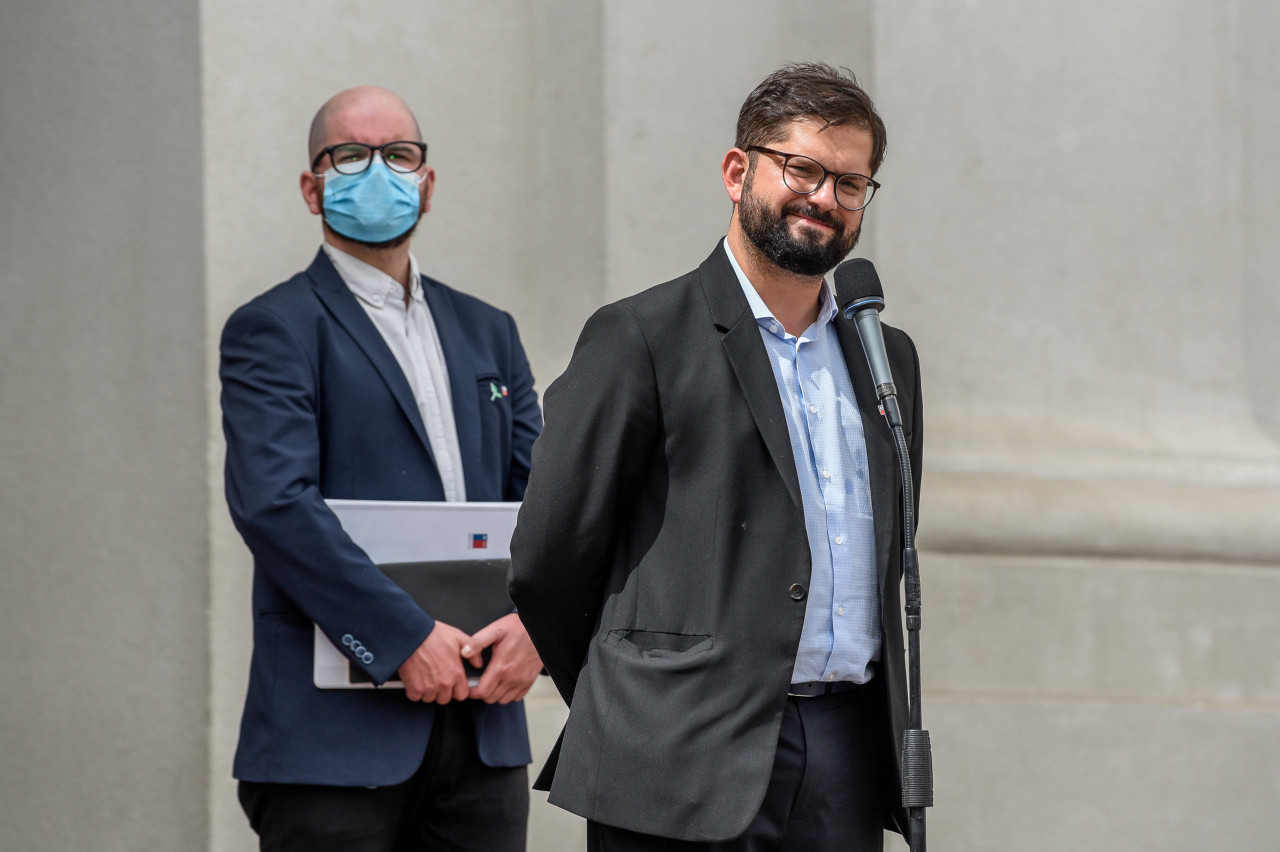Chilean president-elect plans to double science budget

The flag appears to occupy an important place among the reforms expected in the government program of the incoming president of Chile, Gabriel Borek, elected on December 19.
Doubling the national budget for the region, reducing the gender gap in science, and putting these disciplines at the service of climate change adaptation are all part of the proposals in a country that today invests 0.34 percent of GDP in the field.
“We will do this in a phased and detailed manner, with a strong focus on equitable enhancement of research capabilities and without neglecting any area of knowledge.”
Program of the government of Gabriel Borek, President-elect of Chile
As part of the government programme, which will start on March 11, 2022, the Ministry of Science, Technology, Knowledge and Innovation (Mincyt) will be one of the most that will grow. This is because the budget will double, amounting to an investment of 1% of GDP in this matter.
“We will do this in a cross-cutting and clear manner, with a strong focus on equitable enhancement of research capabilities and without neglecting any area of knowledge,” he elaborated. In a program.
Although no further details are known about how to achieve this in a government that will last until 2026 and that will begin in the midst of a health and economic crisis, Cecilia Hidalgo, President of the Chilean Academy of Sciences, confirmed, SciDev.Net . Network That this is just a matter of political will.
“When your budget is 0.3 percent, it’s very easy to double it because the amount is very small and it doesn’t take much effort,” he said.
The average investment in science in the countries of the Organization for Economic Co-operation and Development (OECD), of which Chile is a member, is 2.4 percent, more than seven times what the South American country invests. Meanwhile, the difference with those at the top of the scale, such as Israel and China, is even worse, as they allocate close to 4 percent of GDP.
In Latin America, on the other hand, Chile is not far behind. Uruguay, for example, has invested the same percentage for at least 20 years, and with the exception of Brazil, no country in the region exceeds 0.56 percent of investment in science, according to data from the Network of Science and Technology Indicators – Iberoamericana e Interamericana (RICYT).
Another focus of the program is the recognition that science must play a more active role in the fight against climate change. For this reason, the proposal is to create the Institute for Technological and Public Research on the Climate and Environmental Crisis, which will be under the wing of Mincyt.
The document aims to articulate and finance research and development, technology transfer and adoption, as well as innovation “to meet the various challenges arising from the climate crisis and the environmental crisis.”
Historically, investment in science in Chile was centralized in Santiago, its capital, but that formula no longer works, he said. SciDev.Net . Network Marcelo Mina, Director of the Center for Climate Action at the Catholic University of Valparaíso, former Minister of the Environment, who joined as an advisor to lead Borek for the second round.
“All the literature indicates that the more resilient a country is to climate change, the more decentralized it is,” said the scientist, who is also one of the named options for the future head of the Environmental Portfolio.
Another pledge is progress in gender equality in the sciences. Although it varies by discipline, on average only one-third of researchers are women, a difference that manifests as career years progress and promotions.
Hidalgo praised this initiative, as well as the idea of promoting greater involvement of scientists in the national mission. He cautioned, however, that he would have liked more definitions of how the number of scholars would be promoted and increased, and what would be their inclusion in fair working conditions. He remembers that the latter has been one of the major fighting flags for young researchers in recent times.
Another focus of science policy will be to secure funds for research centers that have been operating for years, but under the current funding structure, only have contributions for a fixed period.
“This is a wonderful change of appearance. Science and innovation require constant funding that cannot be dependent on one government or another,” said Marcelo Mina.

“Award-winning zombie scholar. Music practitioner. Food expert. Troublemaker.”


/cloudfront-eu-central-1.images.arcpublishing.com/prisa/AHVYMMDSTZDTDBFNZ3LMFUOKNE.jpg)








